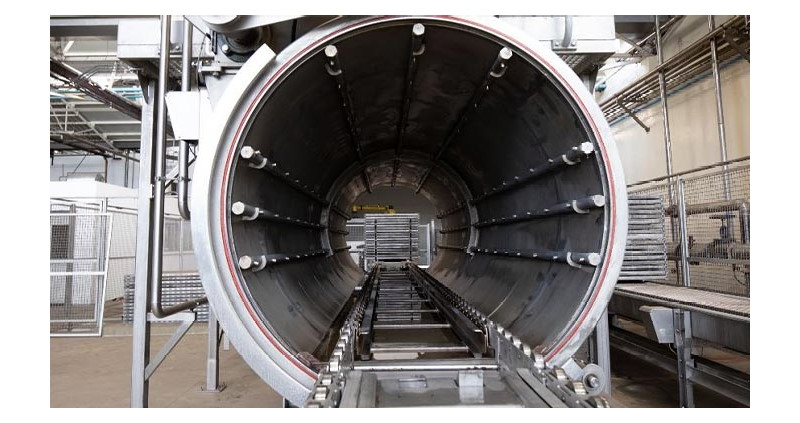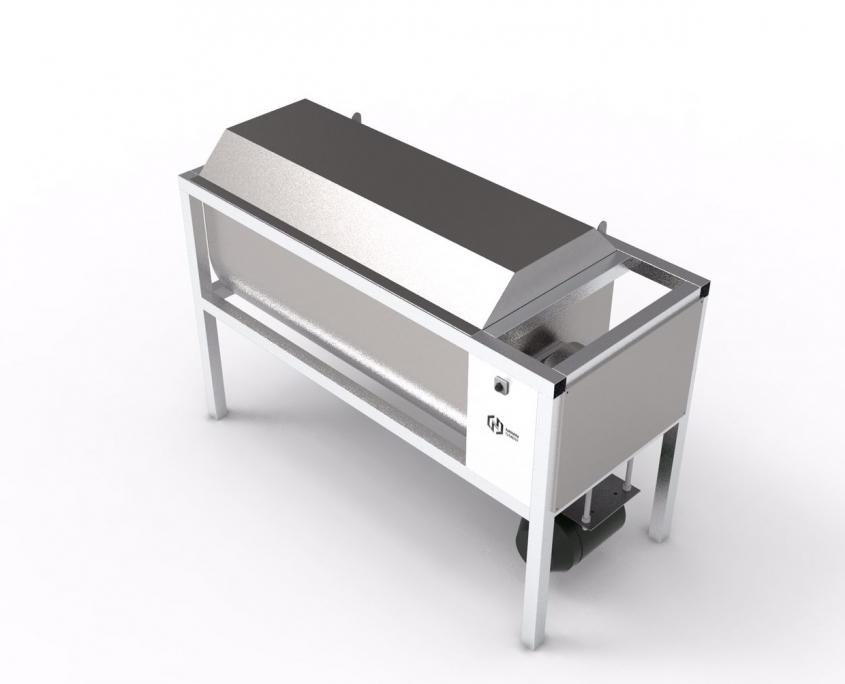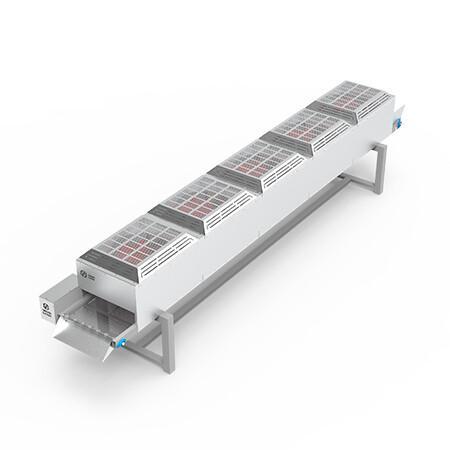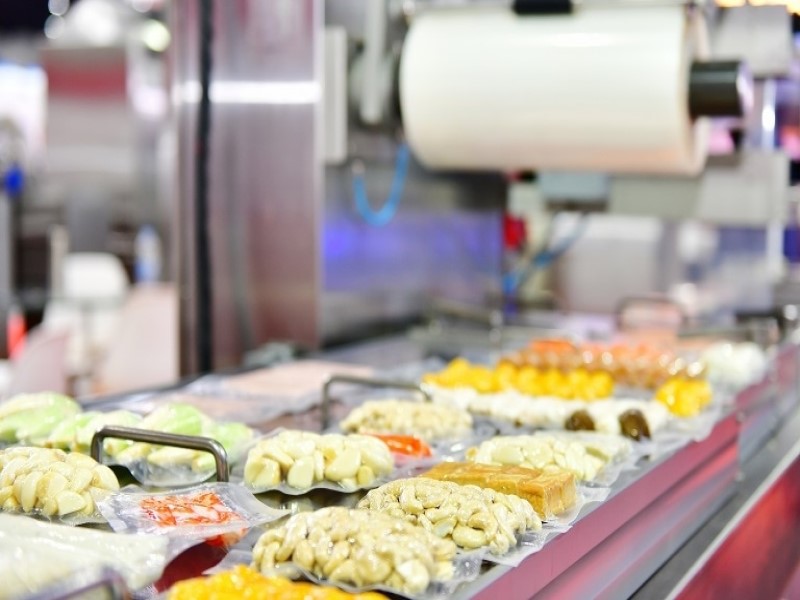Food Production Process [A Comprehensive Guide]
Food production process business can be an exciting and rewarding venture, but it’s not without its challenges. One of the critical aspects of success in this industry is understanding the food manufacturing process thoroughly.
In this comprehensive guide from Novin Sanat, we will explore the intricacies of food production in different categories, focusing on the steps, techniques, safety measures, industry trends, standards, and sustainability practices. Whether you’re new to the food manufacturing industry or looking to enhance your existing knowledge, this guide is your roadmap to success.
What is the Food Manufacturing Process?
The ‘Food production process’ can be broken down into several key steps, each essential for producing safe and high-quality food products. These steps typically include:
1. Ingredient and Food production process
The foundation of any food product lies in its ingredients. Sourcing high-quality raw materials is paramount. This involves establishing relationships with reliable suppliers who meet stringent quality standards.
Manufacturers must ensure that the raw materials they procure are fresh, free from contaminants, and adhere to any regulatory requirements.
2. Preparation
Once the ingredients are sourced, they undergo preparation. This stage involves cleaning, peeling, cutting, and other processes required to make them suitable for the intended product.
For example, in the production of frozen vegetables, the vegetables are washed, blanched, and cut into the desired shapes.
3. Mixing and Blending
Many Food production process involve a mixture of ingredients. Whether it’s creating a sauce, a batter, or a specialized dough, this step is crucial to ensure consistency and uniformity in the final product.
Mixing and blending must be done to precise specifications, often with specialized equipment designed for these purposes.
4. Cooking and Heating
Cooking or heating is a pivotal step in Food production process. It serves multiple purposes, including the elimination of harmful bacteria and pathogens, enhancement of flavor and texture, and the activation of specific chemical reactions.
The cooking process varies widely depending on the product. For example, while baking is common for bread and cakes, pasteurization is essential for dairy products.
5. Packaging and Food production process
Once the food is prepared and cooked, it’s time for packaging. The choice of packaging materials and methods is critical as it affects the product’s shelf life, safety, and presentation. Packaging can range from vacuum-sealed bags for meats to cardboard boxes for cereals.
6. Quality Control in Food production process
Quality control is a continuous process throughout food manufacturing. It involves rigorous inspections and testing to ensure that the final product meets safety and quality standards. Any deviation from these standards can result in recalls, loss of consumer trust, and legal consequences.
7. Storage and Distribution in food manufacturing process
Finished products are stored in warehouses before distribution to retailers or consumers. Proper storage conditions are essential to maintain product quality. Distribution involves logistical challenges, such as cold chain management for perishable goods.
Types of falafel machines of Novin Sanat Company
Food Production Process
The food production process varies significantly depending on the type of food being manufactured. Here, we’ll delve deeper into the processes for some common food categories:
● Baked Goods
Baked goods production involves a series of intricate steps:
– Mixing and Kneading: Ingredients like flour, yeast, water, and others are mixed and kneaded to form dough.
– Shaping: The dough is shaped into the desired forms, such as loaves, rolls, or pastries.
– Proofing: The dough is left to rise, allowing it to expand.
– Baking: Baking is done at precise temperatures to achieve the desired texture and crust.
– Cooling: The baked goods are cooled before packaging to avoid moisture retention.
Baked goods, including bread, cakes, and pastries, require precision and attention to detail to achieve the perfect taste and texture.
● Beverages
Beverage production is diverse, and each category has its unique process:
– Soft Drinks: Soft drinks involve mixing carbonated water with flavorings and sweeteners.
– Dairy-Based Beverages: These include processes like pasteurization, homogenization, and blending.
– Alcoholic Drinks: The production of alcoholic beverages like beer or wine includes fermentation, aging, and bottling.
Each beverage type requires specialized equipment and knowledge of the fermentation or carbonation process.
● Dairy Products
Food production process in Dairy products involves several steps:
– Milk Processing: Raw milk is typically pasteurized, homogenized, and separated into various components.
– Fermentation: For products like yogurt and cheese, fermentation is a crucial step.
– Packaging: Dairy products are carefully packaged to maintain freshness and extend shelf life.
Dairy manufacturing requires strict adherence to sanitation and hygiene standards due to the perishable nature of milk-based products.
● Snack Foods
Food production process in Snack products involves various processes to achieve the desired taste and texture:
– Frying: Potato chips and similar snacks are typically fried to achieve crispiness.
– Baking: Some snacks, like pretzels, are baked to perfection.
– Seasoning: Seasonings and flavorings are added to enhance taste.
Snack food manufacturing is known for its innovative approach to creating unique flavors and textures.
● Canned and Packaged Foods
The production of canned and packaged foods focuses on preservation:
– Cooking: Foods are cooked to eliminate pathogens and extend shelf life.
– Canning: Canned foods are sealed in airtight containers to prevent spoilage.
– Sterilization: Some products, like canned vegetables, undergo sterilization to ensure long-term preservation.
Manufacturers must strictly adhere to canning and sealing procedures to prevent contamination.
● Meat and Poultry
Meat and poultry processing involves several steps:
– Slaughtering: Livestock is slaughtered, and carcasses are prepared.
– Cutting and Grinding: Meat is cut into various cuts or ground for specific products.
– Packaging: Meat products are packaged with care to prevent spoilage and contamination.
The meat industry is highly regulated to ensure safety and traceability.
Food Processing Techniques
Food processing techniques are crucial to achieving desired product attributes. Let’s explore these techniques in more detail:
● Blanching
Blanching is one of the important food manufacturing process which involves briefly immersing food in boiling water or steam. It serves several purposes:
– Enzyme Deactivation Blanching helps preserve the color, flavor, and nutritional value of food by deactivating enzymes.
– Texture Retention It helps retain the desired texture of vegetables, making them suitable for freezing.
Blanching is commonly used in the production of frozen vegetables.
● Freezing
Freezing are Food processing techniques for preserving food by rapidly lowering its temperature. Key aspects include:
– Preservation Freezing helps maintain product quality by preserving texture and taste.
– Storage Frozen foods have an extended shelf life.
Proper packaging is crucial to prevent freezer burn and maintain quality.
● Dehydration
Dehydrations are Food processing techniques which remove moisture from food products. This technique is used for various purposes:
– Shelf Stability: Dehydrated foods have a long shelf life due to reduced moisture content.
– Portability: Dehydrated products are lightweight and convenient for hiking and camping.
Common examples include dried fruits, vegetables, and jerky.
● Fermentation
Fermentation is a microbial process that transforms food. Key aspects include:
– Preservation: Fermentation preserves food through the action of beneficial micro
organisms.
– Flavor Enhancement: It can impart unique flavors and aromas to food products.
Examples of fermented foods include yogurt, sauerkraut, and kimchi.
Food safety in manufacturing and Quality Standards
Food safety in manufacturing and quality is paramount in the food manufacturing industry. Several standards and regulations guide manufacturers in this endeavor:
- HACCP (Hazard Analysis and Critical Control Points): This systematic in food safety in manufacturing is an approach that identifies and controls potential hazards in food production.
- GMP (Good Manufacturing Practices): GMP outlines guidelines for safe and consistent Food safety in manufacturing.
- ISO 22000: This international standard in food safety in manufacturing which specifies requirements for food safety management systems.
Manufacturers must adhere to these standards to prevent contamination, maintain quality, and protect consumers’ health.
Food manufacturing industry trends and Sustainability Practices
The food manufacturing process is constantly evolving, influenced by changing consumer preferences and global trends. Here are some food manufacturing industry trends and sustainability practices:
- Plant-Based Foods: This food manufacturing industry trends aimed for plant-based products has led to the development of meat and dairy alternatives.
- Clean Labeling: Consumers are increasingly seeking products with simple and transparent ingredient lists.
- Reducing Food Waste: Manufacturers are working to minimize food waste through better inventory management and sustainable packaging.
- Sustainable Sourcing: Many companies are adopting sustainable sourcing practices to reduce their environmental impact.
- Innovations in Packaging: Eco-friendly packaging materials and designs are on the rise to reduce plastic waste.
Conclusion
Food production process is a complex and dynamic industry that requires a deep understanding of various processes, techniques, and regulations. This comprehensive guide has provided an overview of the key elements involved in food production, from ingredient sourcing to quality control, and explored specific processes for different food categories.
To succeed in the food manufacturing business, it’s crucial to stay informed about industry trends, embrace sustainability practices, and priorities food safety and quality. Whether you’re a newcomer or an industry veteran, continuous learning and adaptation are the keys to thriving in this ever-evolving field.
Use this guide as your foundation and embark on your journey to producing safe, delicious, and innovative food products that meet the demands of today’s consumers. Your dedication to quality and sustainability will not only drive your success but also contribute to the well-being of communities and the planet.
As one of the manufacturers of food machinery, Novin Sanat Company produces a variety of food processing equipment, including industrial mixers and grinders, industrial fryers, automatic falafel machines, and full product line of nuggets, falafels, and cutlets.







I appreciate that you explained that seeking efficient product management could enhance the production of a business. One of my parent’s friends mentioned the other night that he was hoping to find a food processing technical support solution for their food processing to be more efficient every hour. He asked if I had any idea what would be the best option for consultation. I’m thankful for this informative food processing guide article for the best planning approach. I’ll tell him he can consult the well-known remote food processing company as they can help with faster production.
Hi
We are one the best food machinery in the Middle East & we are the main reference of falafel machines in the world.
Please message me by WhatsApp & let me know how I can help you.
+989135952812
Regards
Sajjad Salehi